Cloud Backup
title: Cloud Backup - How to Set Up QNAP for Cloud Backup created_at: 2018.05.17 updated_at: 2018.05.17 category: Cloud Backup --- :toc: macro :toc-title:

QNAP provides affordable, scalable network attached storage (NAS) devices for consumers, small businesses, and enterprises. Using open source software like Minio or Zenko, you can leverage your own NAS for cloud storage. Retrospect 15.1 for Windows and Mac are certified for QNAP. Follow these step-by-step instructions for configuring Retrospect to integrate with QNAP.

Visit QNAP’s website to choose the right NAS for your business needs. Ensure that it supports hosting Docker instances. Retrospect is currently certified to integrate with Minio and Zenko Cloud Server Docker instances. See below for setup instructions.
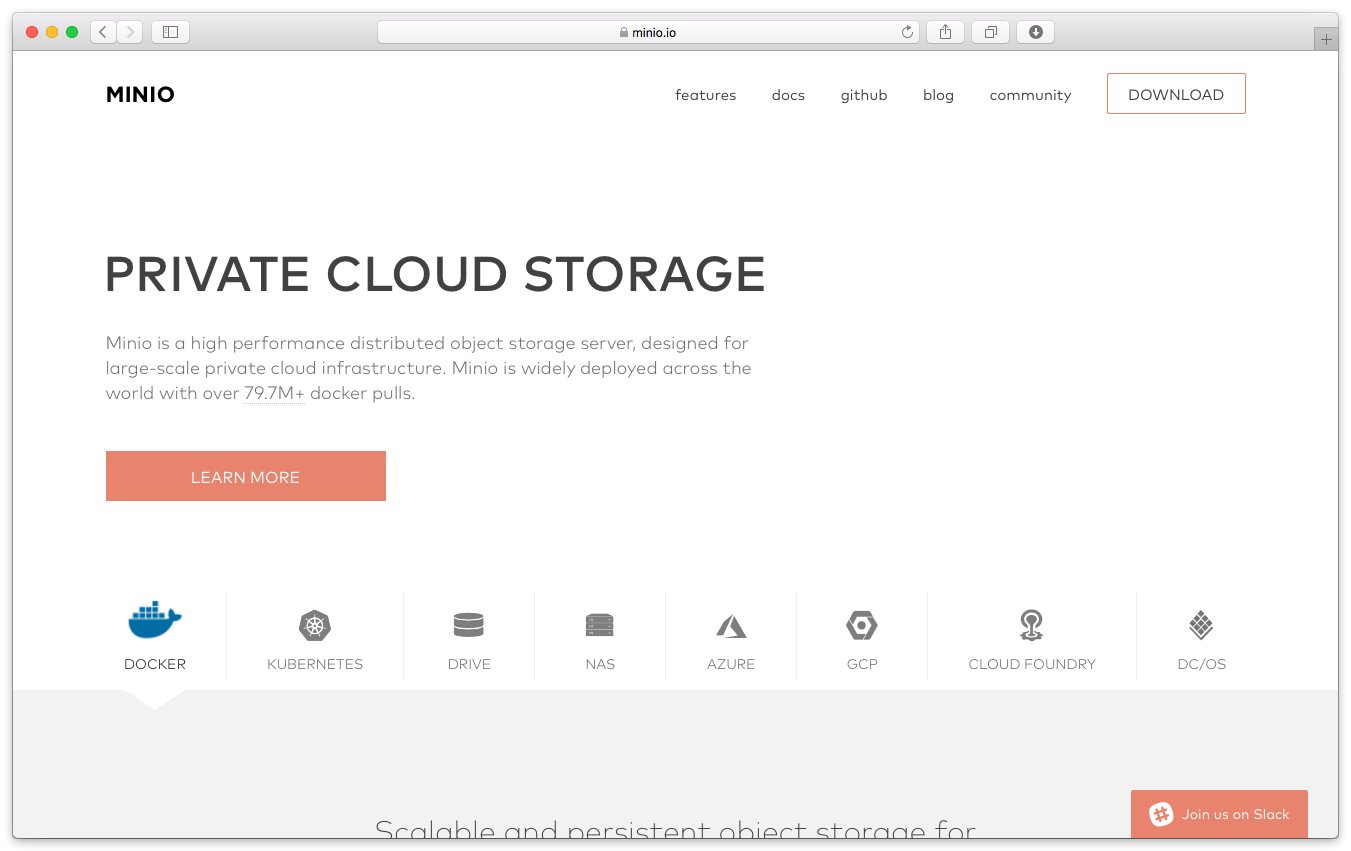
Minio is a high performance distributed object storage server, designed for large-scale private cloud infrastructure. Minio is widely deployed across the world with over 79.7M+ docker pulls. You can deploy it on any hardware you prefer. At the end of the setup, you will receive a path, an access key, and a secret key.
Install Docker.
Download minio/minio.
Connect via SSH.
Run: sudo docker run -p 9000:9000 --name minio -d minio/minio server /export
Run: sudo docker logs minio
Launch a web browser and visit the instance to create a bucket.

Zenko provides a single unifying interface using the Amazon S3 API, supporting multi-cloud backend data storage both on-premises and in the Amazon S3 public cloud as well as other services, including: Available now for Amazon S3, Scality RING and Docker. You can deploy it on any hardware you prefer. At the end of the setup, you will receive a path, an access key, and a secret key.
Install Docker.
Download scality/s3server.
Launch scality/s3server via Image in Docker.
In Docker > Container, highlight scality/s3server1 click on "Details". Local port is what is needed to connect.
Create a bucket (folder) using Cyberduck instructions.
Copy down the default access key and secret key.
Retrospect needs three pieces of information to access Synology:
Path – url_to_instance:port_number/your_bucket_name
Access Key – Use the Access Key provided by your cloud storage instance.
Secret Key – Use the Secret Key provided by your cloud storage instance.
Ajouter le stockage cloud comme destination est simple. Retrospect a un nouveau type de jeu appelé « Nuage/Cloud ». Créez un nouveau jeu de sauvegarde/jeu de media et sélectionnez « Nuage/Cloud » comme type.
Interface Windows
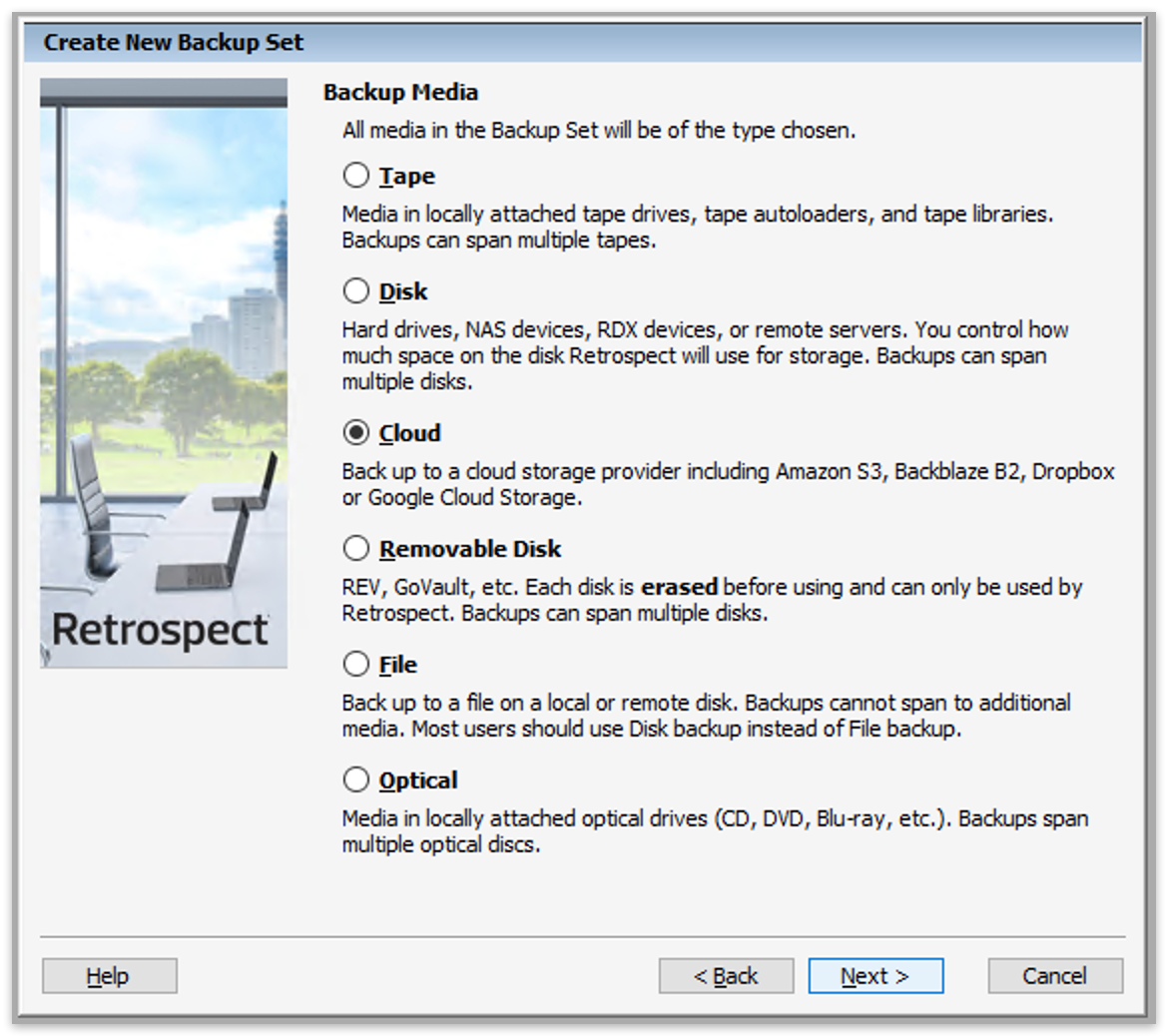
Interface Mac

Next you’ll need to enter your cloud storage credentials.
Interface Windows
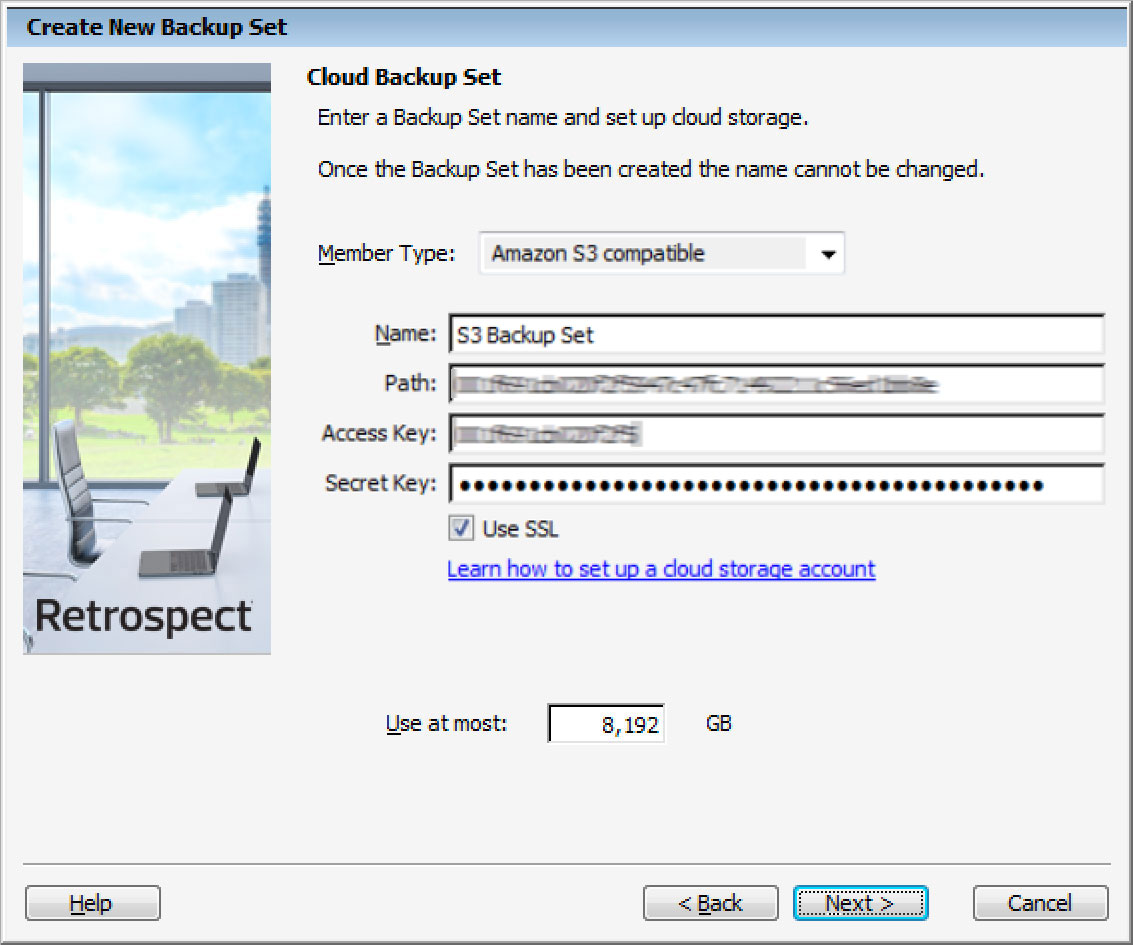
Interface Mac
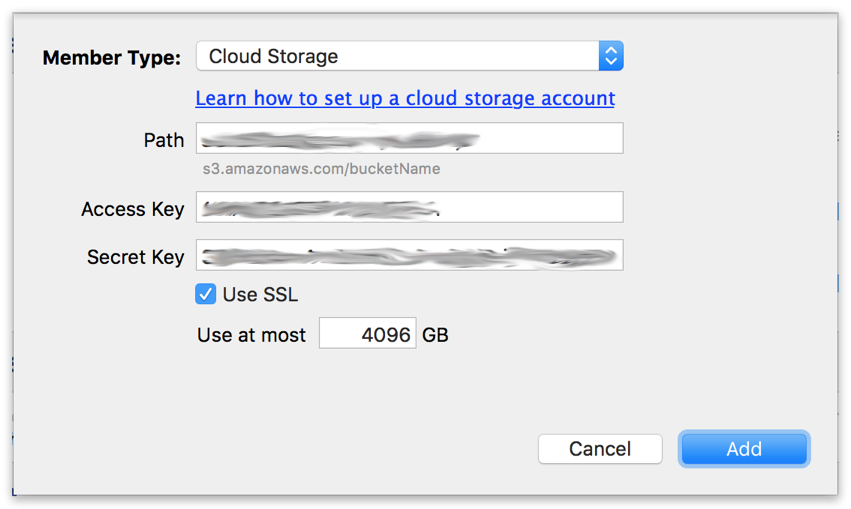
Utiliser le stockage cloud est simple. Après avoir créé un jeu sur le cloud, créez un nouveau script ou ajoutez-le à un script déjà existant, puis cliquez sur « Exécuter ». La sauvegarde commencera avec le téléchargement du contenu du jeu sur l'emplacement de votre stockage sur le cloud. Vous pourrez suivre l’avancée de cette tâche dans l’onglet Exécution (version Windows) ou sous « Activités » (version Mac).
Interface Windows
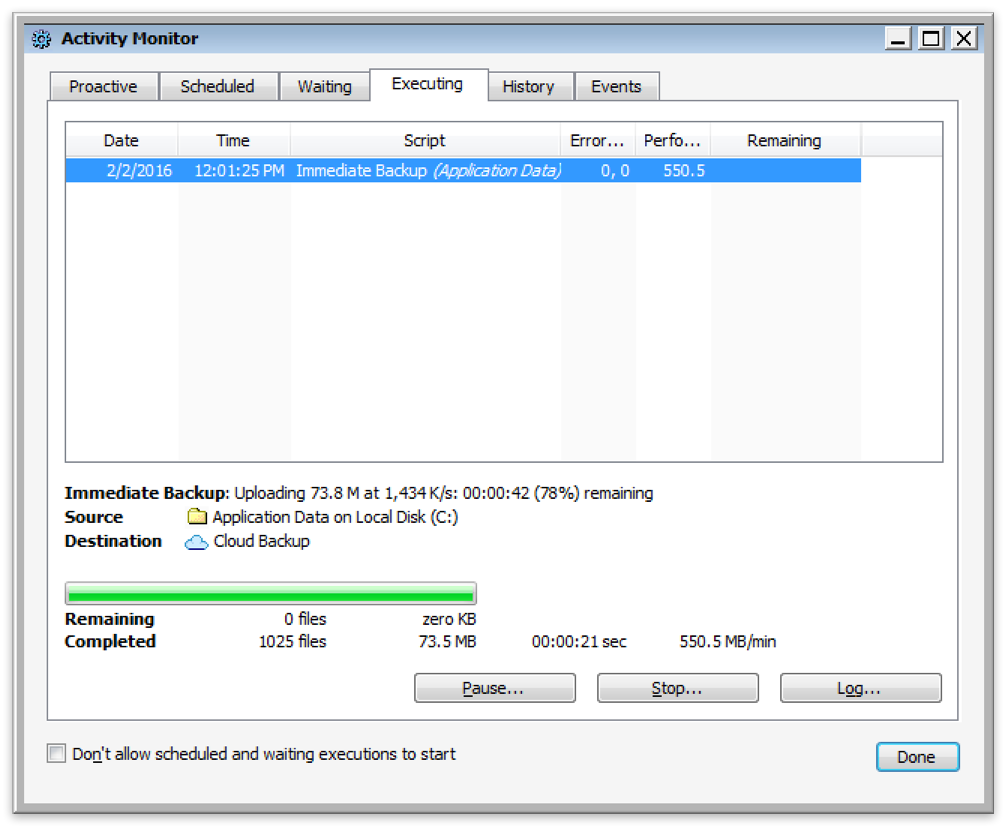
Interface Mac
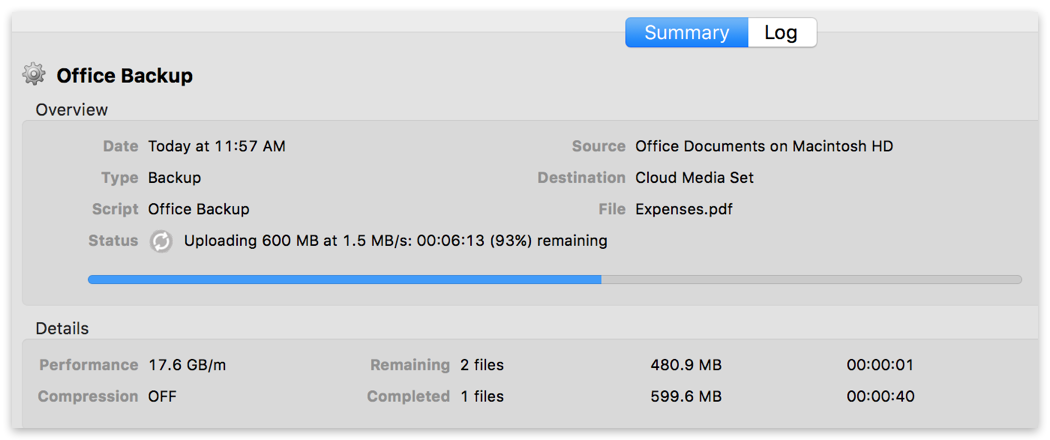
La limitation de bande passante pour la sauvegarde sur le cloud et la restauration sur le cloud est disponible dans Préférences.
Interface Windows
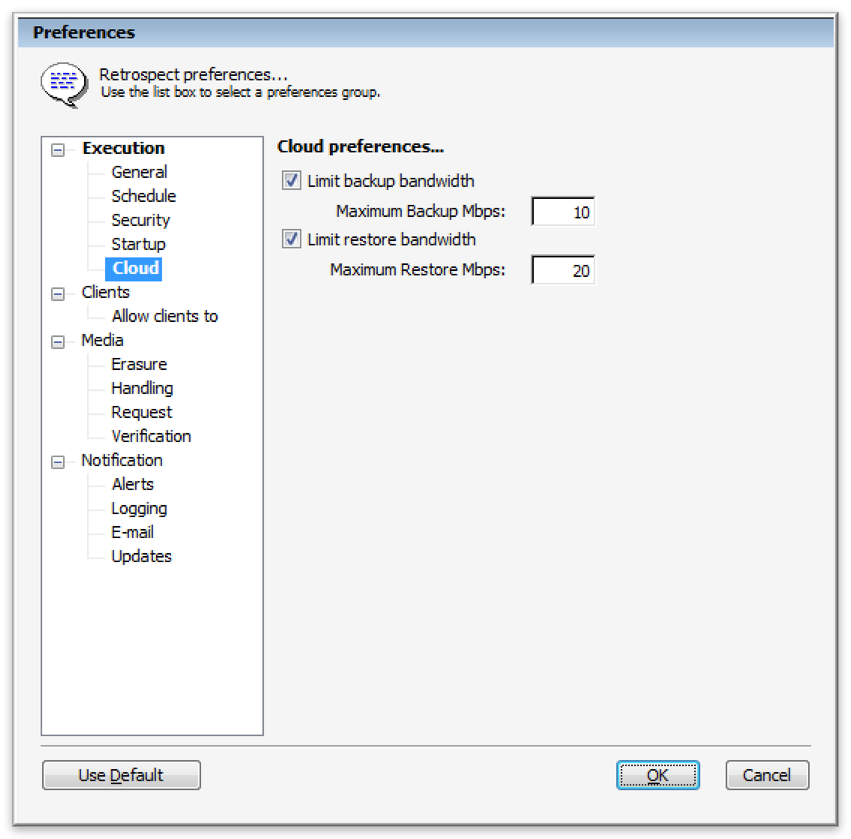
Interface Mac
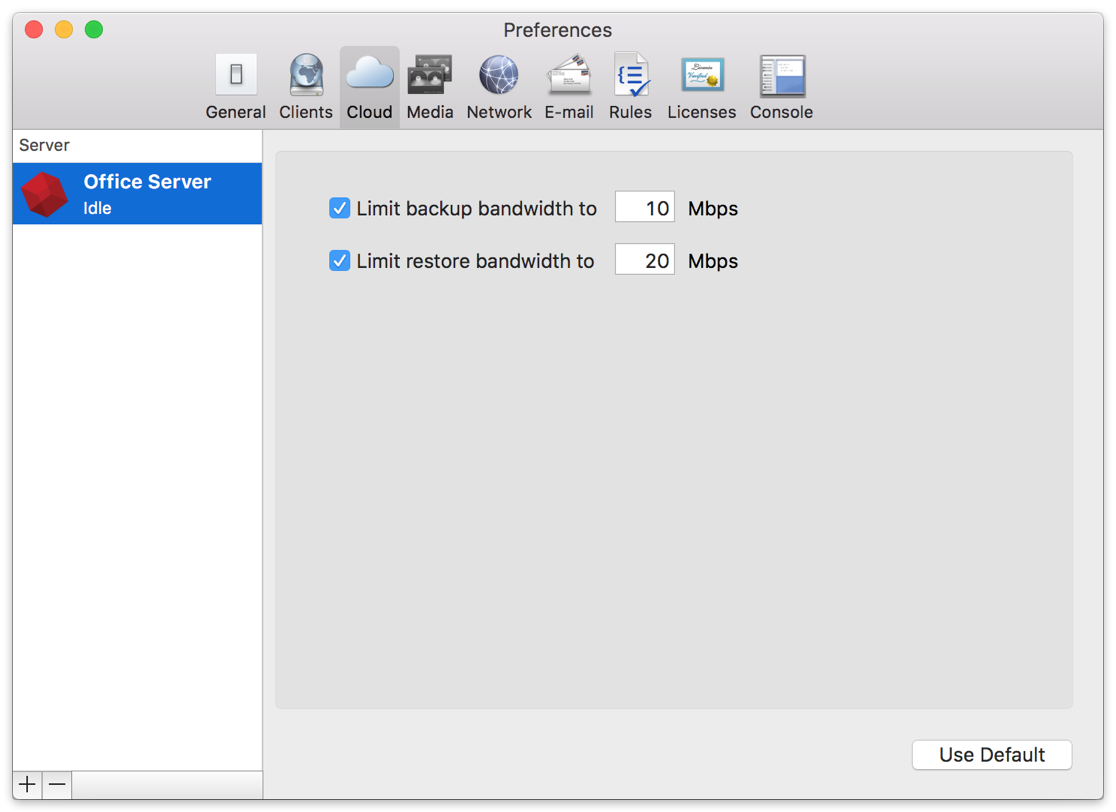
Below are a number of tips for using cloud storage in Retrospect:
Outil de mesure de la bande passante – Mesurez votre bande passante de téléversement et de téléchargement avec cet outil gratuit : <a target="_blank" href="http://speedtest.net">Speedtest.net</a>.
Désactiver la vérification de la sauvegarde – La vérification reviendrait à télécharger en local toutes les données sauvegardées sur le cloud. Retrouvez plus d'information sur l'importance de la désactivation de la vérification pour les sauvegardes dans le cloud sur <a href="/fr/support/kb/best_practices_for_cloud_storage#notes">Sauvegarde sur le cloud - meilleures pratiques pour la protection des données avec le stockage sur le cloud</a>.
Last Update: 17 mai 2018